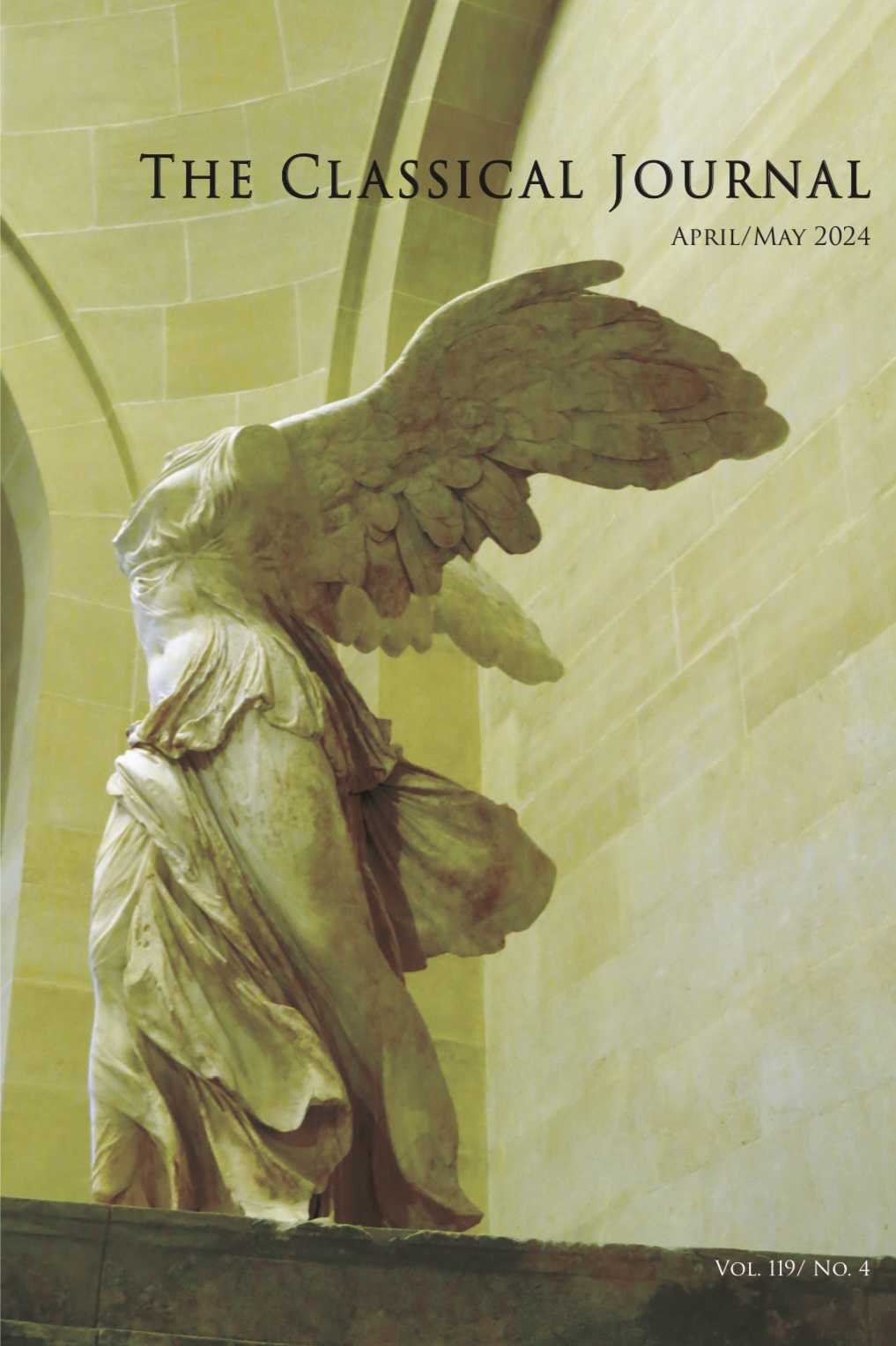The following articles are contained in CJ
119.2
Abstracts of Articles
Lycurgus' Extreme Wisdom: Competing Views of the Lawgiver in Plato and Xenophon
As part of the ongoing reassessment of Xenophon’s philosophical works, scholars have taken a renewed interest in the relationship between Xenophon and Plato, who occasionally criticize one another’s works. Although ancient commentators assumed that the two men must have been rivals, a closer look at each one’s comments on the other’s work reveals that their criticisms were more philosophical than personal. After discussing two examples in which Plato and Xenophon criticize one another’s works, in this paper I suggest that an unusual comment made by Xenophon about Lycurgus, the legendary Spartan lawgiver, is an oblique but critical reference to a statement in Plato’s Symposium about Lycurgus’ wisdom.
News and the Family in Ancient Greece
Scholarship on ancient Greek communication has most often covered military intelligence, diplomatic correspondence or news of public interest. In the present study, in contrast, I investigate the transmission of targeted information, news relevant to a circumscribed number of individuals, such as one household. I maintain that targeted reports were delivered thanks to an institution of informal reportage which was based on a quid pro quo between news-bringers and recipients. Unlike formal messengers, informal messengers voluntarily reported ex tempore alongside their other engagements in order to be compensated. This cultural environment enabled an efficient mechanism for reportage; it was likewise, however, a fertile ground for the circulation of misinformation.
Imperial Nuptials at Pompeii: CIL IV.1261, An Obscene Take on the Marriage of Nero and Pythagoras
Among Pompeian wall inscriptions CIL IV.1261 is well known for its brisk obscenities and problems of text and interpretation. According to the text as it is currently printed, the graffito is generally understood to make a political statement of some kind about the mistreatment of the Roman citizen body; in what circumstances and by whom the collective of ciues Romani has been mistreated cannot be determined from the evidence of the graffito. In this paper, I present a revised text of the graffito, and I argue that the phrase ciuium Romanorum cunnus refers not to the Roman citizen body but to the emperor Nero and that the scene described in the text is the earliest extant testimony to an event that took place in 64 CE and was witnessed by persons unknown, Nero’s marriage as bride to his freedman Pythagoras.


